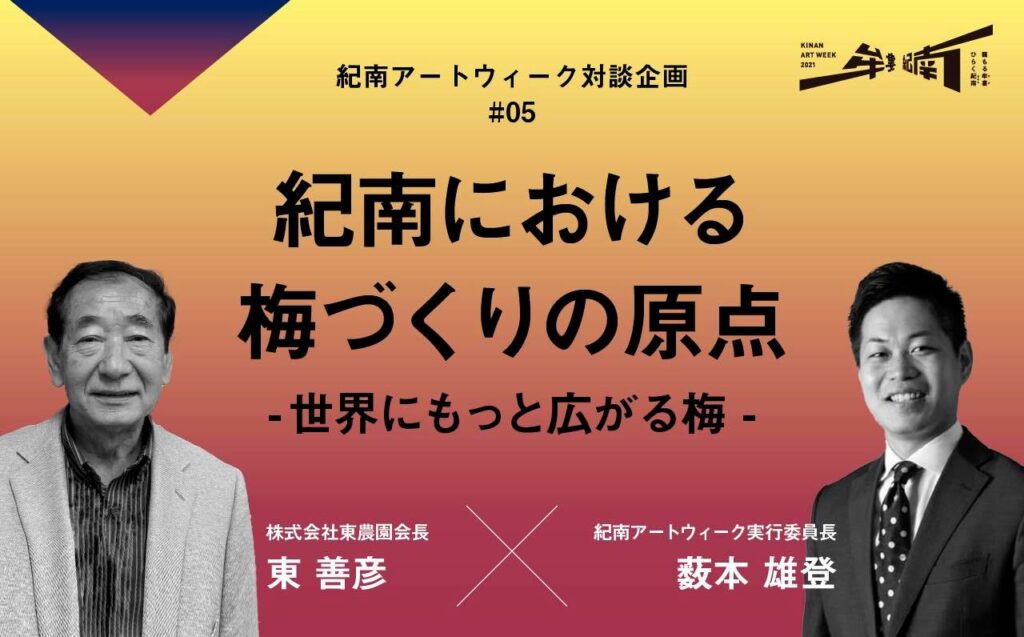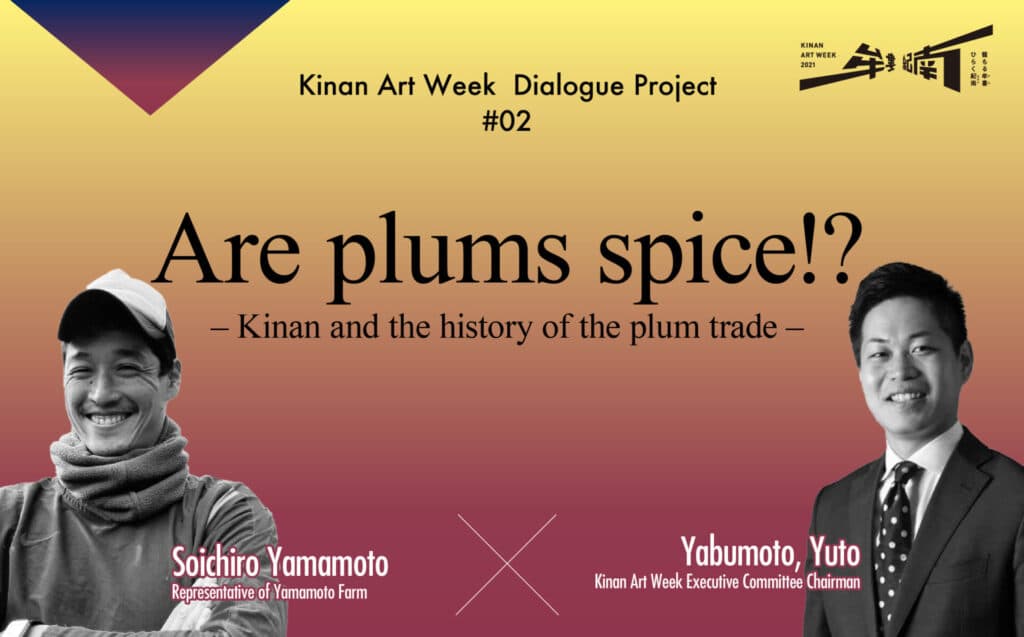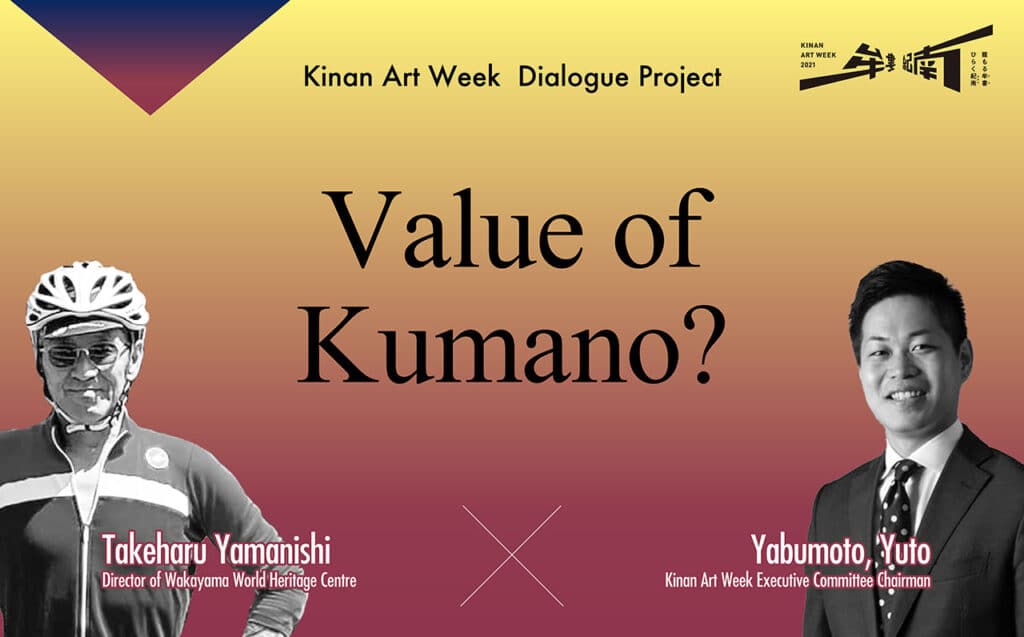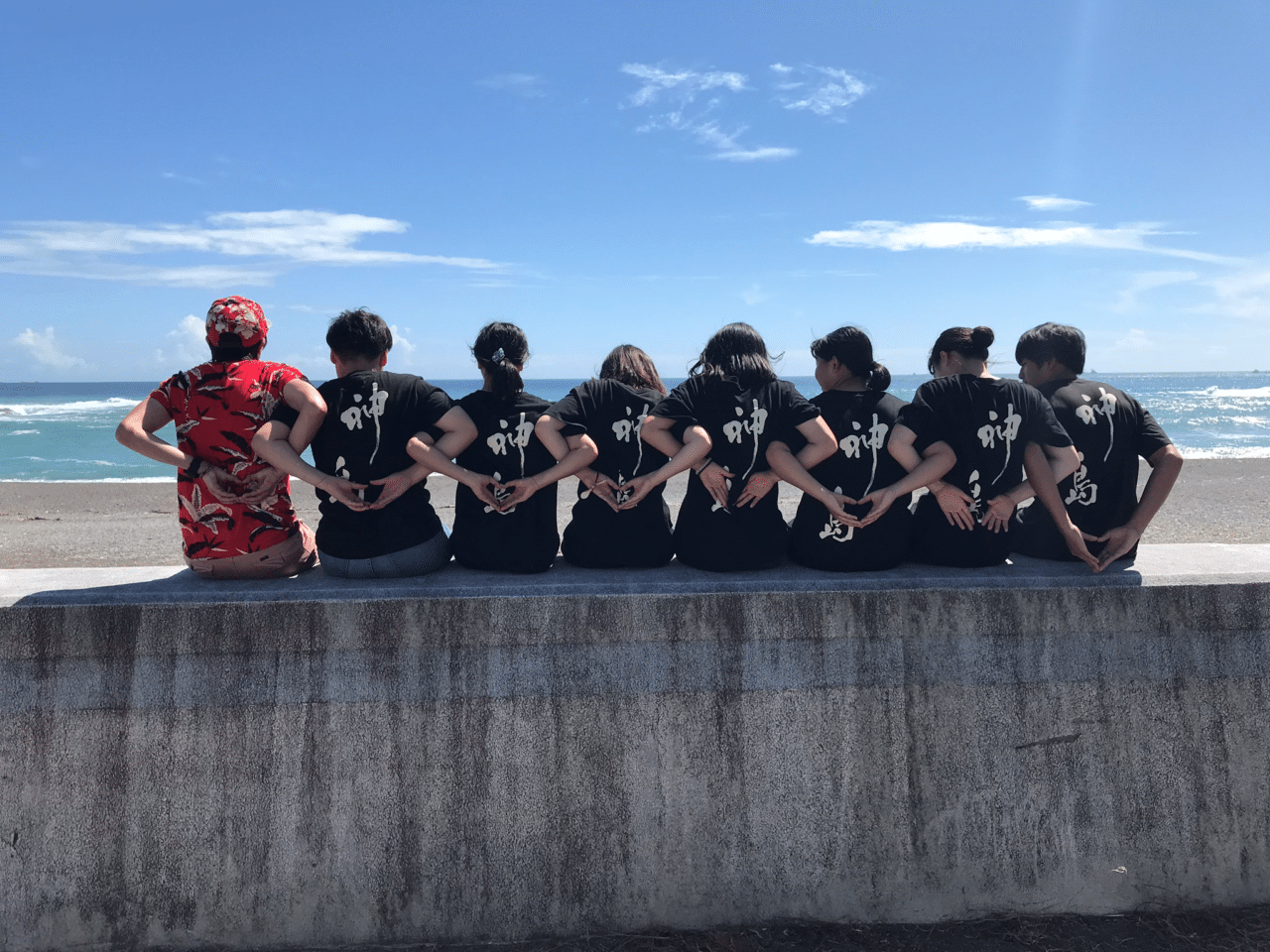
Dialogue Project#18 “What Should Commercial High School be? “
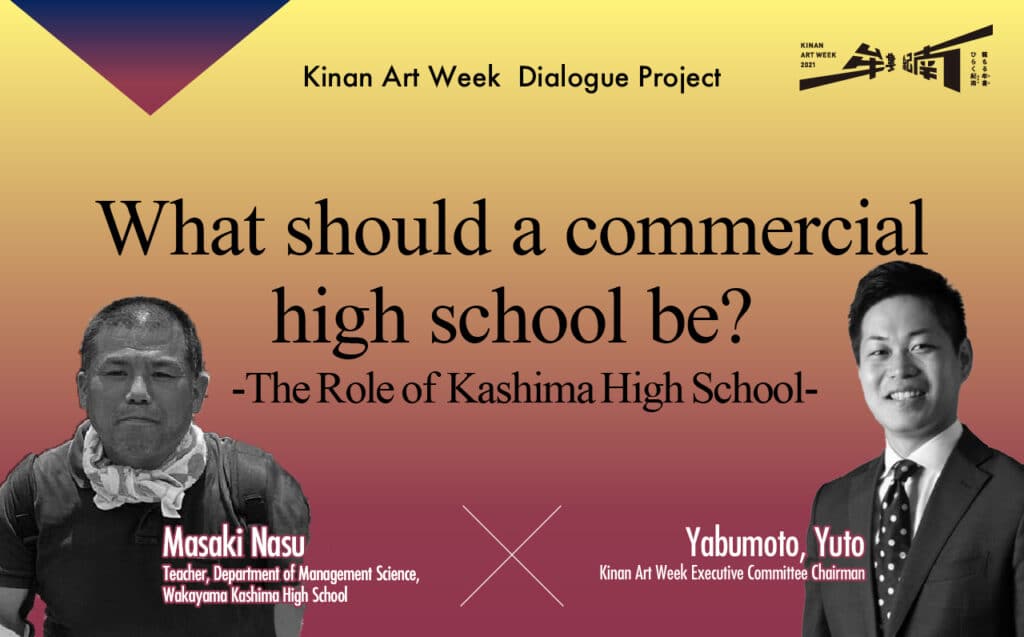
Art Week Dialogue Project #18
Guest Speaker
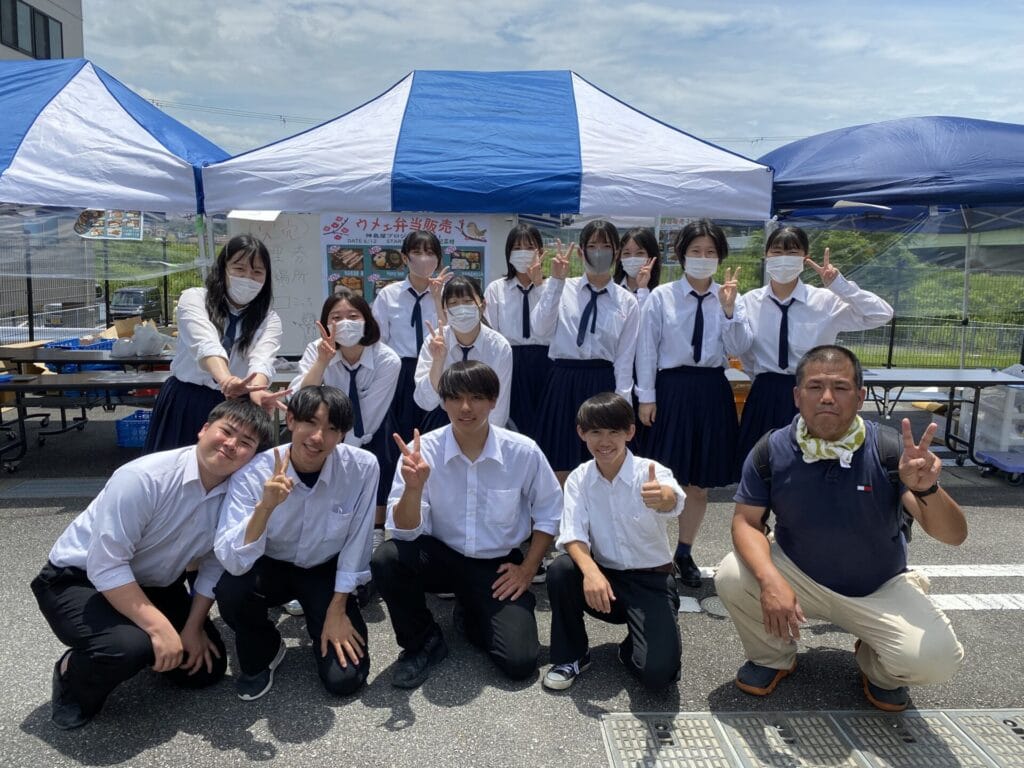
Teacher, Department of Management Science, Wakayama Kashima High School
Mr. Masaki Nasu
Teacher, Management Science Department, Kashima High School
He has been working at Kashima High School for 21 years, and as the founder of “Kashimaya,” he continues to work with the community through product development and event planning and participation.
https://www.tanabe-ch.wakayama-c.ed.jp/
Interviewer
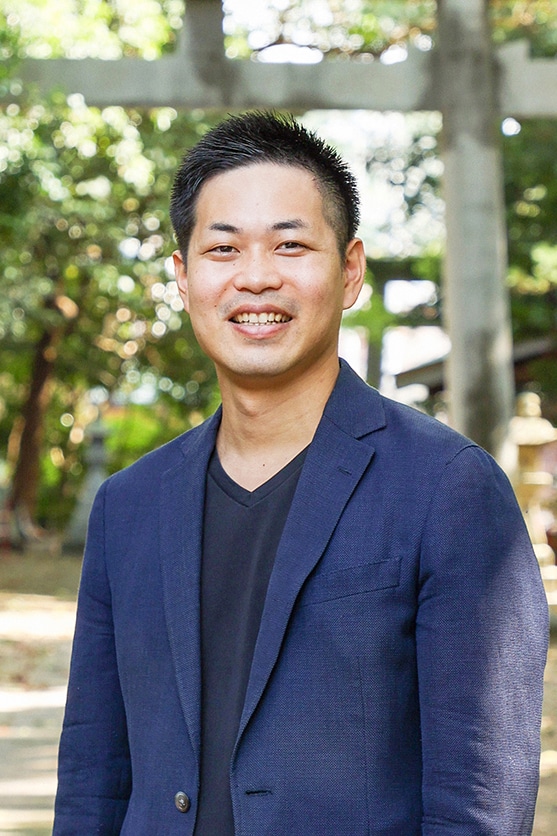
Yuto Yabumoto
Kinan Art Week Executive Committee Chairman
Editing :
Kinan Editorial Department by TETAU
https://good.tetau.jp/
What Should Commercial High School be?
Table of Contents
1. Introduction of Mr. Nasu
2. What is the Department of Management Science?
3. Kashimaya’s Efforts
4. “Let’s Eat Ume” Bento Box Campaign
5. Tree Project
6. Why Do I Want to Share the Appeal of Ume?
7. The Role of Kashima High School
8. Significance of Commercial High School
1. Introduction of Mr. Nasu
Yabumoto.
Thank you very much for your time. Today, I would like to ask you about what you are practicing at Kashima High School, and also about your thoughts on commercial high schools in the Kinan region and their future.
Now, please introduce yourself, Mr.Nasu.
Mr. Nasu.
My name is Masaki Nasu. I am a teacher in the Management Science Department at Kashima High School. This is my 21st year of working at Kashima High School. Previously, I worked for an advertising agency in Osaka as a sales representative for job ads.
My father worked in civil engineering and construction, and also in agriculture. Ever since I was a child, all I saw of my father was his work clothes, and when I was in junior high school, I thought that adults wearing suits were cool, and I longed for a job where I could wear a suit.
When I was in high school, I was a bit of a naughty student. At the time, I felt indebted to my teachers for taking care of me, and I wanted to become a teacher myself, so I obtained a teaching license in commerce at university. However, since there were no slots for teachers in Wakayama Prefecture, I ended up working for a private company.
While I was working at an advertising agency, my father fell in the mountains and suffered a spinal cord injury, which led me to return to my hometown. my father had to be hospitalized for about a year and a half, so for a while after returning to my parents’ home, I was shuttling between the fields and construction sites.
As I continued to work in the fields and at the construction site, the vice principal of Kashima High School at the time asked me if I would be interested in working there , since they had a slot for a teacher. My teacher from my high school club activities had become the vice principal of Kashima High School at the time. I started out as a lecturer, but I have been teaching in the Management Science Department ever since.
Yabumoto.
Thank you, it is amazing that you have been teaching in the same place for over 20 years.
Mr. Nasu.
I think it has to do with the regional characteristics of Wakayama. Wakayama Prefecture is divided into five blocks, but once you reach a certain age and have a fixed place to live, there are basically no transfers across blocks. The area where I work is called “Block 4 *“, and the only commercial high school in this block is Kashima High School.
There are about 10 teachers specializing in commerce at Kashima High School, but there are not many at other schools. So, basically, there are not many places to transfer to. However, for the past 10 years or so, I have been involved in community collaboration activities, and I think that is what has allowed me to continue working at Kashima High School.
*Reference: Outline (Wakayama Prefectural Federation of Senior High School PTA Website)
2. What is the Department of Management Science?
Yabumoto.
What kind of department is the Department of Management Science?
Mr. Nasu.
In a nutshell, it’s a department that provides specialized education in commerce. In the past, what was taught in commerce classes were things like reading, writing, and abacus. There was a strong element of repetition, where students had to hone their skills in calculators and word processing and keep studying to pass certification exams. Currently, the “Courses of Study” presented by the Ministry of Education, Culture, Sports, Science and Technology are more practical in nature *. They’ve set up specialized subjects such as e-commerce, product development, and marketing.
Yabumoto.
It’s very different from the regular course at Tanabe High School *.
*Yabumoto’s home school, Tanabe High School in Wakayama Prefecture https://www.tanabe-h.wakayama-c.ed.jp/high.htm
Mr. Nasu.
However, instead of more specialized classes in commerce, there is less time to study English and mathematics, which makes it difficult to meet the general entrance examinations. However, this makes it possible to implement special initiatives that only a commercial high school can offer. For example, we have a professional designer as a special lecturer in our advertising class, and we invite local ume processing companies and ume farmers to our product development class.
Yabumoto.
In my high school days, the utmost priority was to “aim to pass the university entrance exam” or “enter a prestigious university”, so from the perspective of “fostering merchants”, it was truly an education for the gifted.
As a matter of fact, the company we established in Kinan, “Artport Corporation”, would like to hire new high school graduates rather than new university graduates in the future. We will be hiring local high school students as soon as we are ready. What are the career paths of the students who graduated from Kashima High School?
Mr. Nasu.
Our school has two departments, the General Education Department and the Management Science Department. First of all, most of the students in the Regular Course go on to higher education, and only a few students in the class get jobs. Forty percent of those who go on to higher education are enrolled in four-year universities, and many students go to vocational schools for beauticians and nurses. Some female students also apply to junior colleges.
On the other hand, in the Department of Management Science, few students go to four-year universities; out of 120 students in three classes, only 10 to 15 students go to four-year universities. Also, mainly male students apply for vocational schools.
Most of the students who find jobs choose local companies, but some of them go out of the prefecture. Starting this year, the rules for job hunting for high school students will change, from a “one company per person” system to a “multiple application” system *. Up until now, students were only allowed to choose one company, so if anything, many of them wanted to work for local companies.
3. Kashimaya’s Efforts
Yabumoto.
Kashima High School is involved in a lot of practical activities, and I think the “Kashimaya” * program is particularly wonderful. What are the actual activities of the “Kashimaya”?
*Reference: Kashimaya (Other Activities, Wakayama Prefectural Kashima High School Website)
*Reference: Product development project “Kashimaya” @kashimaya2020 (Facebook)
*Reference Product Development Project “Kashimaya” @kashimaya2021 (Instagram)
*Reference:Kashima High School Product Development Project “Kashimaya @kashimaya_sp (Twitter)
Mr. Nasu.
Thank you very much. I will use the slides to explain.
In the 2012 academic year, we created a class called “Product Development” for research projects and started developing products using the local specialty “Kishu Nanko Ume”. Subject research is a time for students to study on their own for about three hours a week, deciding on a theme by themselves, and is provided in specialized departments such as commerce and industry.
The Department of Management Science had been conducting sales training at events for some time, but we thought it would be a pity for the students if we simply let them experience sales. Therefore, we decided to create this class to develop our own original products that we could confidently recommend to the local community.
Mr. Nasu.
The “Ume Arare” in the lower left of the slide is the first product made by the students *. The product is sold on consignment at nearby produce markets and is so popular that it still sells about 30 bags a day. The “Ume Yakitori Sauce” was also developed by Kashimaya. The sauce contains ume vinegar produced in the process of making pickled plums.
Mr. Nasu.
In addition to sweets and seasonings, we are also developing recipes to promote ume. Among them, the “Ume Yakitori” developed in 2013has been very popular, selling about 2,000 to 3,000 a day at local events. The seasoning liquid used for the ume yakitori is the ume yakitori sauce that I mentioned earlier, and we commercialized the sauce in the hope that people would enjoy ume yakitori at home as well.
The students also often enter cooking contests , so they’re working hard to create a menu using plums for those contests *. They also sell the menus that they come up with for the contest at local events.
*Reference: “Kashima High School wins second championship in Minabe’s Gourmet Koshien” (February 10, 2020, Kii Minpo AGARA)
Mr. Nasu.
Kashimaya has also participated in events outside of the prefecture. In the photo above right, we participated in an event at the Ecopa Stadium in Shizuoka Prefecture *, Taking seven students on the bullet train, which cost us about 300,000 yen in travel expenses, including accommodation. At the time, I was thinking of using the proceeds from the yakitori sales to cover the travel expenses, and I was also thinking about how many ume yakitori I would need to sell in order to avoid collecting expenses from the students. In this way, we also planned for the financial aspect of our activities, and I believe this is another important element of commerce.
Mr. Nasu.
This year we were not able to do so due to the new corona, but every year around June, we also go to supermarkets in urban areas to sample and sell ume products as the “Oume Advertising Team.”
Mr. Nasu.
In addition, I am also involved in producing the Kishu Ishigami Tanabe Plum Forest * . The view from the top of the Kishu Ishigami Tanabe Plum Forestis spectacular, but because it is located at the far end of Tanabe, many people in Tanabe City have never been there. Therefore, with the cooperation of Noukyou Kanko, we planned a bus tour in which high school students showed the local people around Tanabe City *. For lunch, the students prepared a bowl of rice topped with ume, which they made themselves.
*Reference: Kishu Ishigami Tanabe Plum Grove (Tanabe Tourist Association, Wakayama Prefecture)
*Reference: “Local High School Students Devise ‘Plum Viewing Tour'” (January 19, 2015, Tourism Re: Design)
Source: UME-1 Gourmet Koshien (page 10, Kashima Initiatives Orientation PDF)
Mr. Nasu.
The members of Kashimayaalso belong to the executive committee of the “UME-1 Gourmet Koshien*” event held in Minabe-city. Students from Kashima High School and Minabe High School are involved in the planning and management of the event as “student executive committee members,” making it an event where young people play an active role.
We also borrowed a café in the Kinan Cultural Center to hold a high school student restaurant *. We held this event in the hope that local people would enjoy the menu we presented in the cooking contest.
*Reference: Gourmet Koshien winning recipes (UME-1 Festa in Ume no Sato Minabe website)
*Reference: UME-1 Festa in Ume no Sato Minabe 2020 (Minabe Town, Wakayama Prefecture website)
4. “Let’s Eat Ume” Bento Box Campaign
Mr. Nasu.
Currently, in the midst of the Corona disaster, people in the tourism and restaurant industries are trying to devise ways to move the local economy through take-out sales. Kashimayahas also been affected by the new Corona, and we have been unable to hold most of the events we used to hold. However, we were moved by the efforts of the local people and decided to think about what we can do now.
Therefore, the “Let’s Eat Ume” Bento Box Campaign has been implemented since last year. Rather than the students themselves going out in front of the event to sell the products, they planned the event from the perspective of advertising and promotion, and implemented three main campaigns.
Mr. Nasu.
The first is “Creating a flyer for Ume Bento takeout *“. The flyer shown in the slide shows the flyer we made last year. We contacted a local restaurant and asked them to come up with an original “Ume-Bento” lunch box using ume. The students then designed a take-out flyer and placed the flyer at various local stores and government agencies to introduce the stores and promote ume at the same time.
Mr. Nasu.
The second is the “Ume Bento Event Sales”. Here is another document from last year. We held an event where students bought ume bento boxes made by stores as “Kashimaya” and sold them. We held a similar event on June 12 this year, and the bento boxes from 11 stores, 385 in total, were sold out in one hour *. Again this year, we had so many people come to the event.
*Reference: (Kii Minpo AGARA, June 12, 2021)
Mr. Nasu.
The third one is the “My Ume Bento Photo Contest”. This is another photo from last year, but this year it is being held for one month starting June 19 *. The idea is to share photos of ume bento boxes made by ordinary people on Instagram. Last year, we received about 150 entries, including a cooking researcher from Tokyo and a high school girl from Shizuoka Prefecture. This project was also co-organized with JA Kinan, and we asked JA to print flyers and provide prizes for the contest winners. After the contest, the final winners were decided by the students based on their opinions.
Mr. Nasu.
In addition to the three campaigns I have mentioned so far, we are now working on a new project.
The fourth campaign is the “Original Ume Bento Development”. In the past, we asked restaurants to come up with Bento boxes, but this time, we asked the restaurants to commercialize the menus that the high school students came up with. Each group made a trial production, and in the end, we proposed the menu to the restaurant and produced a sample Bento box. These Bento boxes were sold at events and were very popular.
Mr. Nasu.
And the fifth is a campaign called “Promoting Restaurants”. This project was actually adopted as a project during an advertising class when a student said, “Wouldn’t it be fun to do something like this? So we adopted it as a project. The content of the project was to shoot a video introducing various shops *. We decided on a set of questions, filmed them in an interview style, and recorded them in a 3-minute video. The project was carried out in a bead-loop fashion, asking the interviewed store owners to introduce the next store. The interesting part is that you never know which store you will visit next.
5. Tree Project
Mr. Nasu.
In addition to the activities in cooperation with the local community, there is another project that we have implemented in the school. That is the “Tree Project *” that we planned and prepared for a month from last November. Last year, there were few school events, and when we asked the students if they wanted to do something, they said they wanted to make a tree in the school. In our classes, we are working on “Mokuiku” (tree education) through the development of products using Kishu wood. We thought we could incorporate the tree project into our classes as one of the ways high school students can utilize Kishu lumber. In addition to creating the tree, we also made a big art piece that resembled the school emblem of Kashima High School and conducted projection mapping using the school building. It was a lot of preparation, but I think the students were able to have a very valuable experience.
This is a very long introduction to the activities of Kashimaya.
Yabumoto.
Thank you very much for the very detailed introduction.
I think it’s amazing that you’ve been able to keep going until now, despite the fact that things haven’t been going as planned due to the new Corona.
Mr. Nasu.
Thank you very much. We would like to continue our efforts at Kashimaya in the future. Through the “Let’s Eat Ume Campaign,” which we are running again this year, we hope to overcome the Corona disaster together with the community. In fact, we are now asking various stores to produce sweets using ume *, and although the production of ume western sweets has been somewhat difficult, it is going in the right direction successfully.
I think it’s very important for the students and myself to be motivated by the idea that “doing something like this is exciting! I want to place great importance on motivation.
*Reference: Special feature on sweets using ume (June 19, 2021, Kashima High School Product Development Project, “Kashimaya” @kashimaya_sp, Twitter)
Yabumoto.
Kashimaya’s activities are famous all over Japan, but is it normal for commercial high schools to conduct such activities? For example, if there is an outbreak of food poisoning, I think the school will be responsible for it, but I think there is a big risk not only in terms of cost but also in terms of hygiene like this.
Mr. Nasu.
It may not be normal (laughs). With the current cancellation of some government-sponsored events, it is a risk for high school students to gather people and sell Bento boxes. So I’m really grateful to the administration for allowing us to plan and implement this project. We have been doing this activity for many years now, and the community has been appreciative of our efforts, so I am grateful for that.
6. Why Do I Want to Share the Appeal of Ume?
Yabumoto.
Kashimaya has a catchphrase, “We want to convey the appeal of ume *.” Why did you decide to use ume as a subject?
* Wakayama Prefectural Kashima High School Kashimaya Website
Mr. Nasu.
The fact that I am a ume farmer myself has a lot to do with it. In Minabe town, where I live, about 70% of the population is involved in the ume industry, and many students from Minabe town attend KashimaHigh School. I thought that ume would be familiar to the people of Minabe town and the Tanabe area, so I decided to start by creating a menu using ume.
Yabumoto.
How will the students discover and solve problems through activities to convey the appeal of ume?
Mr. Nasu.
In particular, we often compare our activities with those conducted in the past to identify and solve problems. For example, we often make comparisons between years, for example, “Can we sell out products faster than we sold out in an hour and a half the previous year? However, we have not yet reached the point of considering whether we have properly communicated what we want to communicate, so I would like to cover such essential aspects in the future.
Yabumoto.
I would like to discuss with the students, “What is a product?” (laughs).
Mr. Nasu.
The students might get nervous (laughs). Recently, in my activities, I would like to value the “feeling of self-satisfaction” more than external evaluation. I would be happy if the students feel that “it was nice to make everyone happy” through our activities.
7. The Role of Kashima High School
Yabumoto.
What are your thoughts on what role Kashima High School should play in the future?
Mr. Nasu.
I believe that we should aim to be a school that is “needed by the community”. At Kashima High School, some students go to work in their hometowns right after graduating from high school, while others go on to universities or vocational schools in the city. In such a situation, students who experience local collaborative activities during their high school years will come back to the community in the future, even if they leave for the city to go to college or find a job. We hope to become a place that creates such human resources.
Yabumoto.
People tend to assume that they have to go to the city, but I think that you don’t have to leave your hometown. The concept of Kinan Art Week is to export from the local area to the world.
I think that when high school students participate in local collaborative activities and see a business that completes domestic demand in the region, they will get the sense that it will be tough to do business here alone. I don’t think that people who can earn money from external demand will suddenly appear from Kinan, but it might be a good idea to wait for such a possibility.
What kind of role does the subject of commerce have when considered from the perspective of “fostering human resources who can earn foreign demand”?
Mr. Nasu.
It is said that in the past, 40 students from Tanabe Commercial High School (now Kashima High School) were hired by Kiyo Bank as employees. In other words, the high school was positioned as a “source of human resources” for the region. Now, it seems that the school is no longer an institution that can immediately provide useful human resources to the community. However, it seems to have taken on the role of fostering another kind of practical human resources, since it can take practical approaches in the classroom to solve local issues.
Yabumoto.
I see. So, in a broad sense, commerce is an education in thinking about practical solutions.
I feel that the activities of Kashimaya are trying to connect people through their products in the midst of capitalism. The assumption is that products are so-called unconnected. How is capitalism taught at Kashima High School?
Mr. Nasu.
I may not have talked much about capitalism in detail. However, I myself am conscious of incorporating elements of business in my activities to solve local issues. It is important to have a “volunteer spirit” where everyone gives up their free time to help each other, but it is difficult to continue with that. Even though we call it a business element, we also focus on the idea of connecting people.
Yabumoto.
Local activities could become something that contradicts or goes beyond the capitalist world in a way. In Japan’s world of complete domestic demand, if things continue as they are, domestic demand will be squeezed and we will become poorer. I feel that discussing these points of view and coming up with solutions may be an important part of Kashima High School as a leader in creating the future.
Mr. Nasu.
In order to continue our activities under such circumstances, I believe we need to develop tourist attractions that attract visitors from outside and products to sell to the outside world.
Yabumoto.
“The art world”, as it is called, has two sides: one that is firmly aligned with capitalism, and the other that criticizes it head-on. In the same way, it would be interesting for educational institutions to explore the relationship between capitalism and activities in the community. How to guide students will become more important in the future, but what function do you play?
Mr. Nasu.
I’m often referred to as a “producer”. Rather than making decisions ahead of time, I always want to create the parts that students want to do. I always want to create the part of the project that makes the students want to participate . If they start an activity and end up not taking responsibility for it, they won’t know what they are doing. Thankfully, we often receive inquiries from local residents who want to work together. If the students find it interesting, we accept it, but if the students are not interested, we may decline.
8. Significance of Commercial High School
Yabumoto.
I am curious as to why a commercial high school was built in this Kinan area in the first place. How long has Kashima High School been in existence?
Mr. Nasu.
In 1916, Tanabe Jitsugyo Gakko (Tanabe Industrial School), the basis of Kashima High School, was founded; in 1956, it became Tanabe Commercial High School, and in 2006, it became Kashima High School *. Since the school was originally a business school, it probably taught reading, writing, and abacus, which was the actual business of the time.
*Reference: Message from the Principal (Wakayama Prefectural Kashima High School Website)
*Reference: History (Wakayama Prefectural Kashima High School Website)
Yabumoto.
At that time, they were educating people in the practical means of living. In the past, Tanabe High School was an elite training school, but perhaps Tanabe Jitsugyo High School was established to train such people, thinking that practical people would be the need of the society in the future. Does Kashima High School still have a vision that reflects the ideas of that time?
Mr. Nasu.
We have three words in our school motto: “Ideal”, “Wisdom”, and “Unity ” *. Even now that we have changed our name to Kashima High School, our vision may not have changed much. However, I think that we are now placing special emphasis on activities in cooperation with the local community.
*Reference Educational Policy (Wakayama Prefectural Kashima High School Website)
Yabumoto.
I see. Discussing ideals is “actively considering wisdom,” and this may result in unity.
Mr. Nasu.
The commerce class and the activities of Kashimaya may be the place where we can discuss our ideals. I hope that teachers and students can unite as they talk and share their ideas. As the population of Wakayama Prefecture continues to decline, the schools seem to think that they need to have “school characteristics. I personally think that “cooperation with the local community” will be a feature of Kashima High School. I hope that we can continue to unite and contribute to the community. In this sense, I think that a commercial high school is a place where you can challenge yourself to do many things.
Yabumoto.
That’s exactly the significance of a commercial high school. I think there is more freedom and connection to art in a commercial high school than in a regular high school.
As a commercial high school, what role do you want to play in the future?
Mr. Nasu.
Even here in the Kinan area, there are many children who do not have the opportunity to experience various aspects of life within the community. In the future, I would like to focus on building a community outside of home and school, and create a place where children can be active.
Yabumoto.
For example, we, as outsiders, may be able to help provide a place for people to discuss their ideals. I believe that art can be used to express one’s thoughts and to organize issues in the community.
Finally, is there anything you are expecting from us, Mr.Nasu?
Mr. Nasu.
I think the dialogue at Kinan Art Week is very interesting. High school students don’t see people who are working hard in the community as much as they might think. Therefore, I hope that through this dialogue, the thoughts and personalities of local people can be conveyed to high school students. The stereotype of today’s junior and senior high school students is that you have to go to Osaka to be interesting, so I hope that even a little bit of the fact that there are people doing interesting things in the countryside will enter their minds.
Yabumoto.
I learned a lot. Thank you very much for your time today.
Mr. Nasu.
Thank you very much, too.
.

